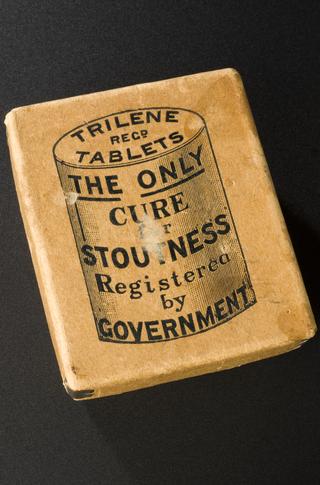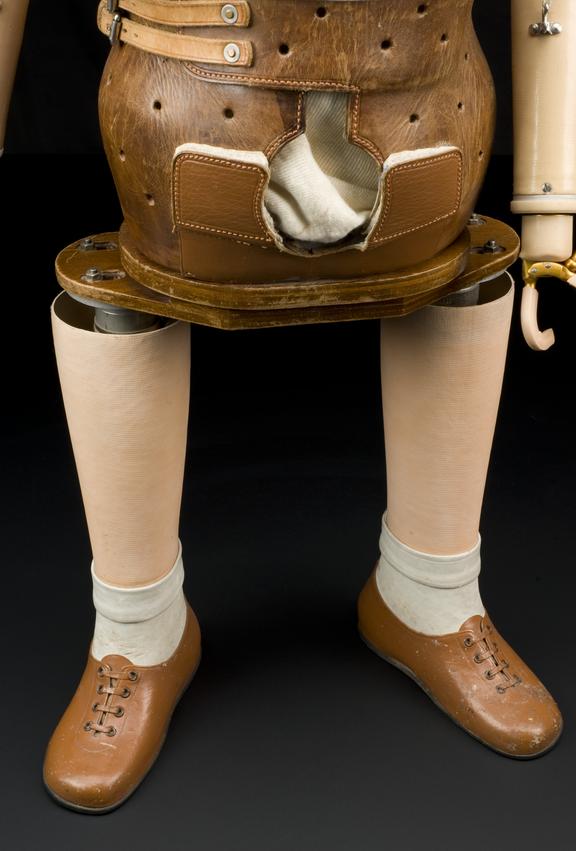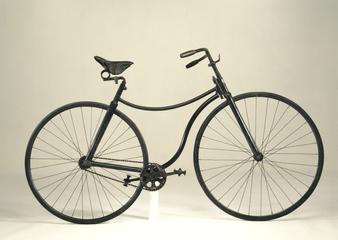
Pair of 'swivel-walkers' designed for a child with limb difference






Pair of "swivel-walkers" designed for a child, born with limb difference designed at the Holland Bloorview Kids Rehabilitation Hospital formerly called the Ontario Crippled Childrens Centre in Canada, made in the United Kingdom by Hanger with modifications of a chest piece made by Dr Ian Fletcher, 1966
We do not know much about who these prosthetic or artificial limbs were made for or why. Over time, one of the hooks attached to the artificial arm has become rotated from its original position.
Dr Ian Fletcher oversaw artificial or prosthetic limb fitting at Queen Mary’s Hospital, Roehampton. Originally dealing with Second World War veterans, road accidents and children affected by polio, Fletcher also met with many families and children living with thalidomide impairments. Prosthetic or artificial limbs were in part meant to act as reparations for the impairments that thalidomide had caused. They were frequently used as a way of visually “normalising” the bodies of people living with thalidomide impairments. Many question who these supposed improvements were really meant to help. Some children underwent operations to make the prosthetic limbs fit better which could include amputations. Children had little input into these decisions and the trauma of some of these medical interventions is still felt today, both emotionally and physically.
Thalidomide was a compound found in drugs prescribed to people in the late 1950s and early 1960s. Although today it is associated primarily as a treatment for pregnancy related nausea, it was also prescribed to anyone experiencing symptoms of colds, flu, headaches, anxiety, and insomnia. Thalidomide causes nerve damage in the hands and feet of adults, but when taken in early pregnancy it causes impairments such as limb difference, sight loss, hearing loss, facial paralysis, and impact to internal organs. One tablet is enough to cause significant impairments. Researchers later identified that there was a link between the impairment a person is living with, and which day of the pregnancy thalidomide was taken. UK distributors withdrew the drug in 1961 and a government warning was issued in May 1962.
These limbs were designed at the Ontario Crippled Children’s Centre (now called the Bloorview) in Canada. They were made by American limb-making company, Hanger. Hanger was founded by James Edward Hanger, one of the first soldiers to undergo an amputation during the American Civil War (1861-1865). Hanger designed his own prosthetic limbs and founded the company that still exists today.
Details
- Category:
- Orthopaedics
- Object Number:
- 1999-574
- Measurements:
-
overall: 720 mm x 435 mm x 230 mm,
- type:
- artificial leg
- credit:
- Richmond Twickenham and Roehampton Healthcare NHS Trust




